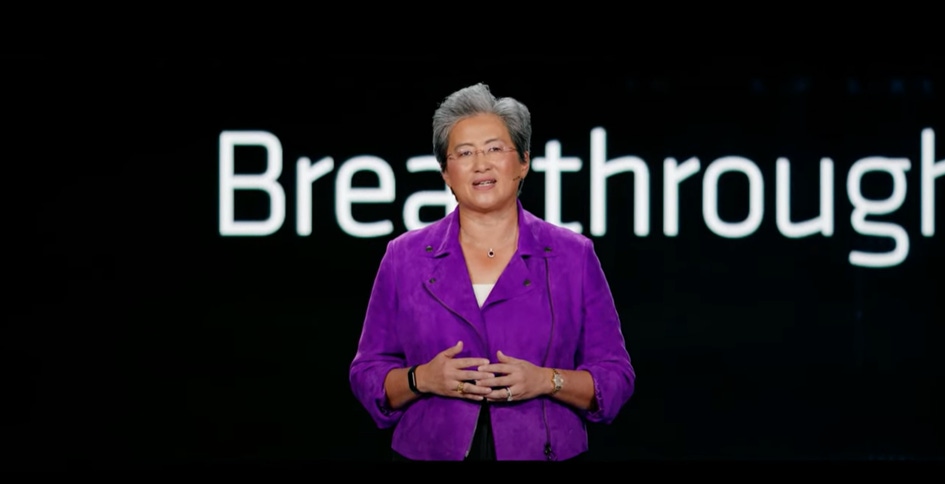AMD Shortens Data Center Racks with Its MI300 Accelerated Processing UnitAMD Shortens Data Center Racks with Its MI300 Accelerated Processing Unit
AMD announced plans for the launch of the MI300, the first data center chip to combine GPU and CPU. Here’s what that means for enterprises.
January 5, 2023

Advanced Micro Devices (AMD) today announced the release date for its Instinct MI300 processor, which is the first chip to combine GPU and CPU processing in one data center semiconductor, at CES 2023.
The news comes in the midst of tenuous times for the target audience for the MI300. Firms focused on high performance computing (HPC) and artificial intelligence (AI) such as cloud service providers and hyperscale data center operators are facing restructuring, data center build pauses, pressures to reduce carbon footprints, and community resistance to building data centers.
While the MI300 doesn’t address all of those issues, AMD designed it to have an impact on two: operational efficiency (lowering both OpEx and CapEx) and using less power for more processing strength.
In essence, the MI300 gives environmental benefits while taking up less space and putting out more power. No other chip, including Intel’s Ponte Vecchio, can boast combined GPU and CPU power the MI300 offers.
Applications of MI300 in Data Centers
The MI300 isn’t for enterprise data centers, unless they’re running supercomputers or AI training workloads. Where we see the MI300 making an impact is with CSPs and hyperscalers that process exabytes of data.
Since the MI300’s design boasts more power in less space, CSPs could save big on hardware costs. With its conservative energy usage, new chip helps CSPs and hyperscale companies meet their sustainability objectives.
Industry Analysis and Tech Specs
Industry analysts’ responses to the MI300 are positive but measured. Here’s what Jay Goldberg, corporate strategy principal, D2D Advisory, Inc. shared with Data Center Knowledge about today’s news.
“I think the new product looks solid, not necessarily revolutionary, but just a big advance in a long series of advances,” says Goldberg. “AMD entered the year poised to gain more share in the data center and today’s announcement shows how they are going to achieve that.”
In terms of technical specifications, the chip has analysts excited.
“The Instinct MI300 is a monster chip taking advantage of 3D-stacked packaging, HBM, and advanced process nodes,” says Manoj Sukumaran, senior analyst at Omdia. “The 146 billion transistors makes it about 50% denser than Intel's Data Center GPU Max Series (Ponte Vecchio).”
Dr. Lisa Su Driving AMD’s Data Center Chip Dominance
Analysts reserve their highest praise for AMD’s Chair and CEO Dr. Lisa Su.
“Today’s announcement shows that AMD continues to execute incredibly well,” says Jay Goldberg, corporate strategy principal, D2D Advisory, Inc. “Lisa Su deserves a lot more credit than she gets for the remarkable turnaround in AMD's ability to execute to plan and on time.”
Goldberg’s ‘on time’ comment may allude to Intel’s infamous re-scheduling of major/highly anticipated releases of chip updates such as Meteor Lake and Sapphire Rapids. Intel has a lot more to manage as they have taken fabrication in-house while AMD focuses on design and outsources manufacturing to TSMC.
AMD’s design-only approach is a strategy that seems to be reaping results as AMD continues to set industry standards and then deliver on them.
“AMD seems to be on schedule to launch the MI300 in H2 2023, as the vendor already has pre-production units now,” said Sukumaran.
The Advent of APU
While the concept of combining GPU and CPU on one chip isn’t new to the industry overall, combining them on an HPC chip is new. This provides another crowning achievement for the chip maker since AMD pioneered the processor combination back in 2011. The launch of the MI300 shows AMD continues to push the boundaries of what it terms Accelerated Processing Unit (APU) design and execution.

Picture2_7
The firm’s laptop APU chips were AMD’s initial foray into APU. Now with MI300, it takes the best of its GPU technology (AMD Instinct MI250X) with CPU for HPC technology (EPYC series) to create the first HPC data center semiconductor APU chip. Now the processor types reside in a single package and their design enables high bandwidth connections.
About the Author
You May Also Like







